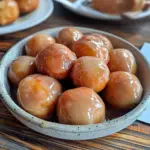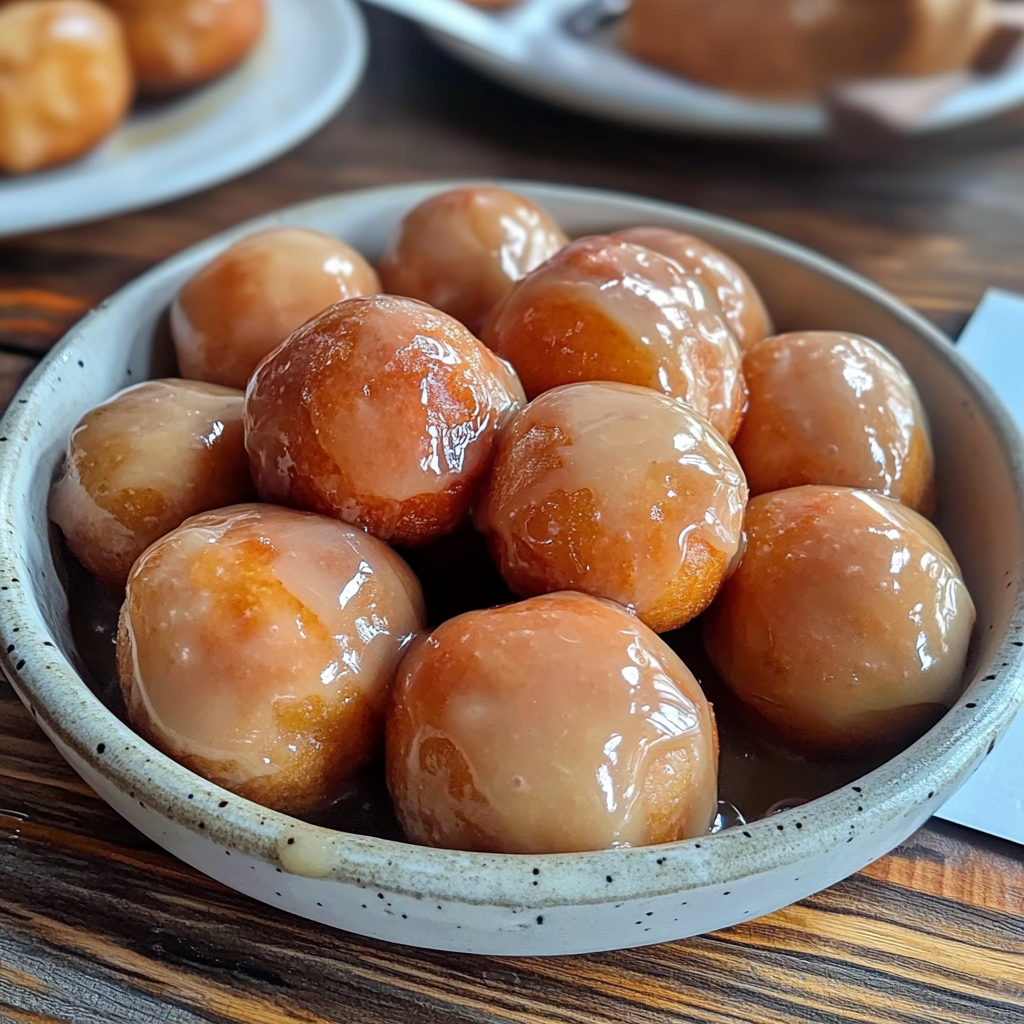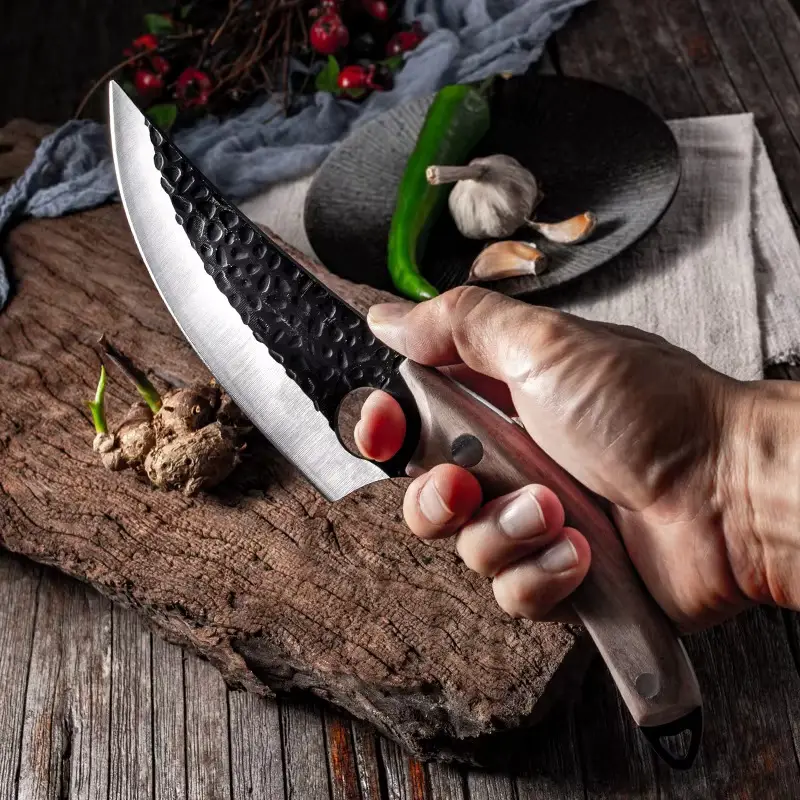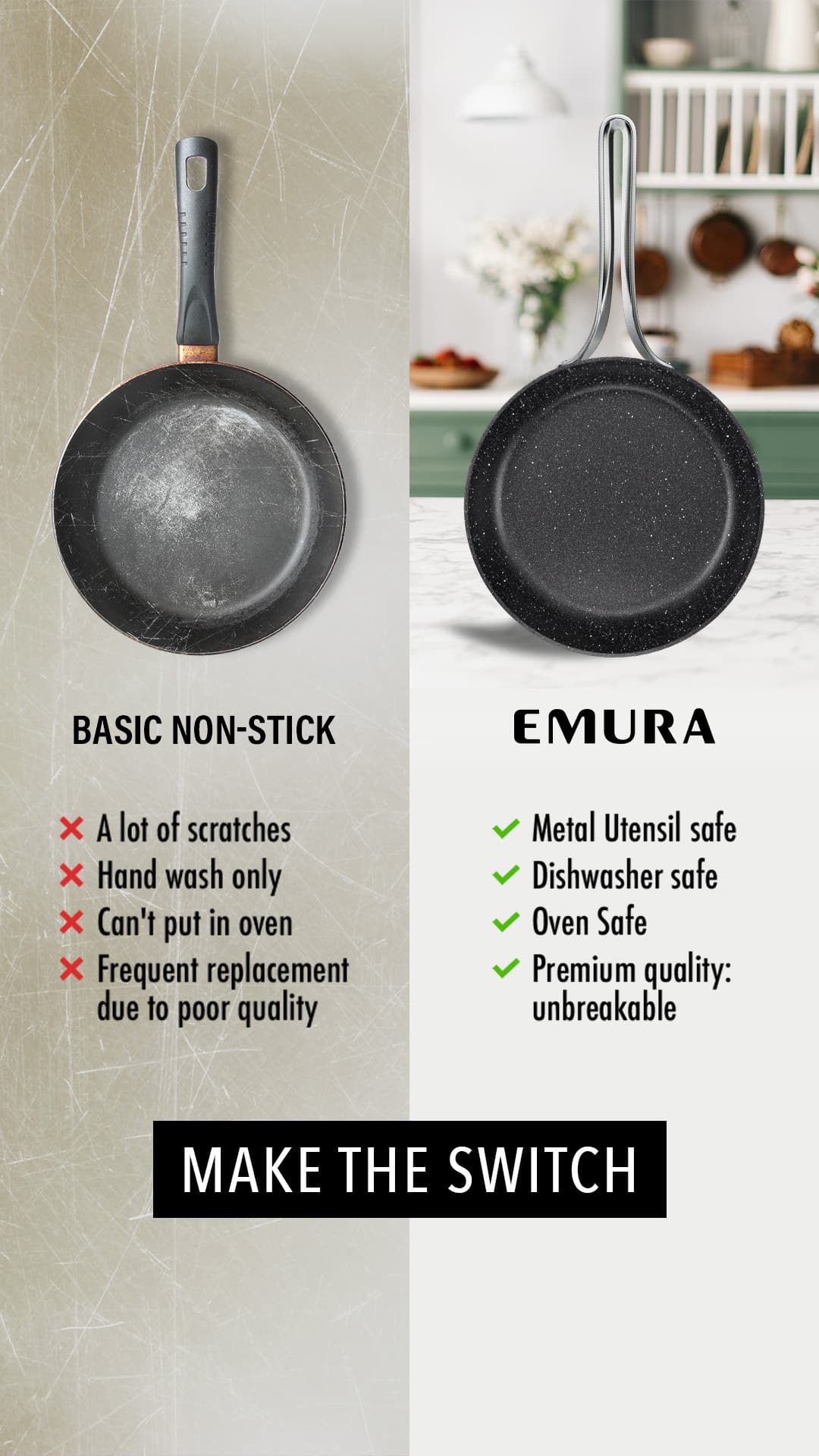Few things are as satisfying as a batch of warm, homemade glazed donut holes. These bite-sized treats are soft, fluffy, and coated in a sweet, glossy glaze that melts in your mouth. Whether enjoyed as a breakfast indulgence, an afternoon snack, or a dessert, donut holes are a favorite across all ages.
Unlike traditional full-sized donuts, donut holes are smaller and easier to make, requiring less time and effort while still delivering the same delicious flavors. They can be deep-fried for a classic taste or baked for a lighter option. Plus, with just a few simple ingredients, you can whip up a batch in no time!
In this recipe guide, we’ll walk you through the process of making homemade glazed donut holes from scratch, covering everything from ingredient selection to frying techniques, alternative preparation methods, and even fun variations. Whether you’re a seasoned baker or a first-time donut maker, you’ll find everything you need to create the perfect glazed donut holes right here.
Why You’ll Love This Recipe
- Quick and easy – Donut holes cook much faster than full-sized donuts, making them perfect for a spontaneous treat.
- Soft and fluffy texture – These donut holes have a light and airy interior with a slight crispiness on the outside.
- Perfectly sweet glaze – The classic sugar glaze adds the right amount of sweetness and a glossy finish.
- Customizable flavors – You can easily add spices, fillings, or toppings to make them your own.
- Great for sharing – Whether for breakfast, dessert, or a party, these bite-sized treats are always a hit!
Preparation Time and Servings
- Prep time: 20 minutes
- Cook time: 10 minutes
- Total time: 30 minutes
- Yield: About 30 donut holes
- Serving size: 5 donut holes
Nutritional Information (per serving)
- Calories: 250
- Carbohydrates: 35g
- Protein: 3g
- Fat: 12g
- Fiber: 1g
- Sugar: 18g
Ingredients
For the Donut Holes:
- 2 cups all-purpose flour
- 2 teaspoons baking powder
- ½ teaspoon salt
- ½ teaspoon ground nutmeg (optional, for classic donut flavor)
- ¼ cup granulated sugar
- 2 tablespoons unsalted butter, melted
- ½ cup whole milk
- 1 teaspoon vanilla extract
- 1 large egg
- 2 cups vegetable oil (for frying)
For the Glaze:
- 1 ½ cups powdered sugar
- 3 tablespoons milk (adjust for desired consistency)
- 1 teaspoon vanilla extract
Step-by-Step Instructions
Step 1: Prepare the Dough
- In a large bowl, whisk together the flour, baking powder, salt, nutmeg, and sugar.
- In a separate bowl, whisk together the melted butter, milk, vanilla extract, and egg.
- Gradually add the wet ingredients to the dry ingredients, stirring until a soft dough forms. Be careful not to overmix, as this can make the donut holes dense.
Step 2: Heat the Oil
- In a deep, heavy-bottomed pot, heat the vegetable oil to 350°F (175°C). Use a candy or frying thermometer to maintain the correct temperature.
- While the oil heats, prepare a plate lined with paper towels to drain the fried donut holes.
Step 3: Shape and Fry the Donut Holes
- Using a small cookie scoop or a teaspoon, scoop out portions of dough and roll them into small balls with your hands.
- Carefully drop a few dough balls at a time into the hot oil, being careful not to overcrowd the pan.
- Fry for 2-3 minutes, turning occasionally, until golden brown on all sides.
- Remove with a slotted spoon and transfer to the paper towel-lined plate to drain excess oil.
- Repeat with the remaining dough, ensuring the oil stays at the right temperature.
Step 4: Make the Glaze
- In a medium bowl, whisk together the powdered sugar, milk, and vanilla extract until smooth.
- If the glaze is too thick, add a little more milk. If it’s too thin, add more powdered sugar.
Step 5: Glaze the Donut Holes
- While the donut holes are still warm, dip each one into the glaze, rolling it around to coat evenly.
- Place them on a wire rack over a baking sheet to allow excess glaze to drip off.
- Let the glaze set for about 10 minutes before serving.
Ingredient Background
- Baking powder – Acts as a leavening agent to create a fluffy texture.
- Nutmeg – A key ingredient in traditional donut recipes, adding a subtle warmth.
- Milk and butter – Provide richness and moisture to the dough.
- Vegetable oil – A neutral oil ideal for frying, ensuring crisp yet tender donut holes.
Technique Tips
- Keep the oil temperature steady – Fluctuating temperatures can result in uneven cooking.
- Test one donut hole first – This helps check the oil temperature and cooking time before frying the entire batch.
- Use a cookie scoop for uniform size – Evenly sized donut holes cook more consistently.
Alternative Presentation Ideas
- Cinnamon Sugar Donut Holes – Toss the warm donut holes in a cinnamon-sugar mixture instead of glazing.
- Chocolate Glazed Donut Holes – Replace vanilla glaze with a rich chocolate glaze.
- Filled Donut Holes – Inject jam, custard, or Nutella inside for an extra surprise.
Additional Tips for Success
- Don’t overmix the dough – Overworking it can lead to dense, tough donut holes.
- Let the glaze set properly – Allow at least 10 minutes for a smooth, hardened finish.
- Use a deep pot for frying – This helps prevent splattering and ensures even cooking.
Recipe Variations
- Baked Donut Holes – Bake at 350°F (175°C) for 10-12 minutes instead of frying.
- Vegan Donut Holes – Use plant-based milk, egg substitutes, and coconut oil.
- Pumpkin Spice Donut Holes – Add ½ teaspoon pumpkin spice and replace milk with pumpkin puree.
Freezing and Storage
- Room temperature – Store in an airtight container for up to 2 days.
- Refrigerate – Keeps fresh for up to 5 days. Warm before serving.
- Freeze – Freeze unglazed donut holes for up to 2 months. Thaw and glaze before serving.
Healthier Twist Ideas
- Bake instead of fry – Reduces oil content while keeping them fluffy.
- Use whole wheat flour – Adds fiber and nutrients.
- Reduce sugar – Use less sugar in the glaze or opt for a light dusting instead.
Serving Suggestions for Events
- Breakfast platter – Serve with coffee, fresh fruit, and yogurt.
- Party dessert table – Arrange in a tower for a fun, shareable treat.
- Holiday treats – Customize with colored glazes for festive occasions.
Special Equipment
- Deep pot or Dutch oven
- Slotted spoon
- Candy thermometer
- Wire rack
- Cookie scoop
Frequently Asked Questions
1. Can I make these ahead of time?
Yes! You can prepare glazed donut holes in advance and store them in an airtight container at room temperature for up to two days. If you prefer to keep them fresh for longer, store them in the refrigerator for up to a week. To reheat, warm them in the microwave for 10–15 seconds or place them in a 300°F oven for 5 minutes. If you are making a large batch, consider storing the fried donut holes unglazed and adding the glaze just before serving for the best texture and appearance.
2. What’s the best oil for frying?
The best oils for frying donut holes are neutral-flavored oils with a high smoke point, such as vegetable oil, canola oil, or peanut oil. These oils allow the donut holes to fry evenly without imparting any unwanted flavors. Avoid using olive oil or butter, as they have lower smoke points and can burn easily, resulting in an off taste. It’s also important to use fresh oil to ensure clean flavors and a crisp, golden texture.
3. Can I make these without a deep fryer?
Absolutely! A deep fryer is not necessary to make great donut holes. A heavy-bottomed pot or a Dutch oven works just as well. Simply fill the pot with about 2 inches of oil and heat it to 350°F. Using a thermometer will help you maintain the correct temperature, ensuring the donut holes cook evenly and don’t absorb excess oil. If you don’t have a thermometer, test the oil by dropping in a small piece of dough—if it sizzles and floats, the oil is ready.
4. Why are my donut holes dense?
Dense donut holes can be caused by a few factors. Overmixing the dough can develop too much gluten, making them tough rather than light and airy. Additionally, frying at too low a temperature can result in greasy, heavy donut holes, as they absorb more oil while cooking. To avoid this, mix the dough gently until just combined and ensure your oil is consistently at 350°F before frying.
5. Can I air-fry these?
Yes! If you prefer a healthier alternative, you can air-fry donut holes. Preheat your air fryer to 350°F and lightly grease the air fryer basket to prevent sticking. Arrange the donut holes in a single layer, ensuring they are not overcrowded. Air-fry for about 8 minutes, flipping them halfway through. While they won’t have the same deep-fried crispness, they will still be delicious and tender. Once done, coat them with glaze or a cinnamon-sugar mixture for extra flavor.
6. How do I get a smooth glaze?
For a smooth, lump-free glaze, sift the powdered sugar before mixing it with milk and vanilla extract. Whisk the glaze thoroughly until it reaches a silky consistency. If it’s too thick, add a few drops of milk; if it’s too thin, add more powdered sugar. For best results, dip the donut holes in the glaze while they are still slightly warm, as this helps the glaze adhere smoothly and set evenly.
7. What can I use instead of powdered sugar for the glaze?
If you don’t have powdered sugar, there are a few alternatives you can try. A simple honey glaze made with warm honey and a splash of milk or water creates a beautiful, glossy finish. You can also drizzle the donut holes with melted chocolate or caramel sauce for a decadent touch. If you prefer a more rustic approach, rolling the donut holes in cinnamon sugar while they are still warm provides a classic and delicious coating.
8. Can I add flavors to the glaze?
Yes! There are many ways to customize the glaze to suit your taste. For a citrusy twist, add a teaspoon of lemon or orange zest along with a few drops of juice. Maple extract can give the glaze a warm, rich depth of flavor. Almond extract or coconut extract are great choices for a nutty, aromatic glaze. For a chocolate glaze, simply mix in cocoa powder and a little melted butter. Feel free to experiment and create unique flavors that match your preference!
Conclusion
Glazed donut holes are an irresistible treat that’s easy to make and fun to customize. Whether you prefer classic vanilla glaze, a dusting of cinnamon sugar, or a drizzle of chocolate, these bite-sized delights offer endless possibilities. The best part? You don’t need a deep fryer or fancy equipment—just a few simple ingredients and a little patience. Whether you’re making them for a weekend brunch, a family gathering, or just because, these homemade donut holes are sure to be a hit. Try this recipe today and enjoy warm, freshly made donut holes bursting with flavor!
Print
Glazed Donut Holes
- Total Time: 30 minutes
- Yield: About 30 donut holes 1x
Ingredients
For the Donut Holes:
- 2 cups all-purpose flour
- 2 teaspoons baking powder
- ½ teaspoon salt
- ½ teaspoon ground nutmeg (optional, for classic donut flavor)
- ¼ cup granulated sugar
- 2 tablespoons unsalted butter, melted
- ½ cup whole milk
- 1 teaspoon vanilla extract
- 1 large egg
- 2 cups vegetable oil (for frying)
For the Glaze:
- 1 ½ cups powdered sugar
- 3 tablespoons milk (adjust for desired consistency)
- 1 teaspoon vanilla extract
Instructions
Step 1: Prepare the Dough
- In a large bowl, whisk together the flour, baking powder, salt, nutmeg, and sugar.
- In a separate bowl, whisk together the melted butter, milk, vanilla extract, and egg.
- Gradually add the wet ingredients to the dry ingredients, stirring until a soft dough forms. Be careful not to overmix, as this can make the donut holes dense.
Step 2: Heat the Oil
- In a deep, heavy-bottomed pot, heat the vegetable oil to 350°F (175°C). Use a candy or frying thermometer to maintain the correct temperature.
- While the oil heats, prepare a plate lined with paper towels to drain the fried donut holes.
Step 3: Shape and Fry the Donut Holes
- Using a small cookie scoop or a teaspoon, scoop out portions of dough and roll them into small balls with your hands.
- Carefully drop a few dough balls at a time into the hot oil, being careful not to overcrowd the pan.
- Fry for 2-3 minutes, turning occasionally, until golden brown on all sides.
- Remove with a slotted spoon and transfer to the paper towel-lined plate to drain excess oil.
- Repeat with the remaining dough, ensuring the oil stays at the right temperature.
Step 4: Make the Glaze
- In a medium bowl, whisk together the powdered sugar, milk, and vanilla extract until smooth.
- If the glaze is too thick, add a little more milk. If it’s too thin, add more powdered sugar.
Step 5: Glaze the Donut Holes
- While the donut holes are still warm, dip each one into the glaze, rolling it around to coat evenly.
- Place them on a wire rack over a baking sheet to allow excess glaze to drip off.
- Let the glaze set for about 10 minutes before serving.
- Prep Time: 20 minutes
- Cook Time: 10 minutes
Nutrition
- Serving Size: 5 donut holes
- Calories: 250
- Sugar: 18g
- Fat: 12g
- Carbohydrates: 35g
- Fiber: 1g
- Protein: 3g



